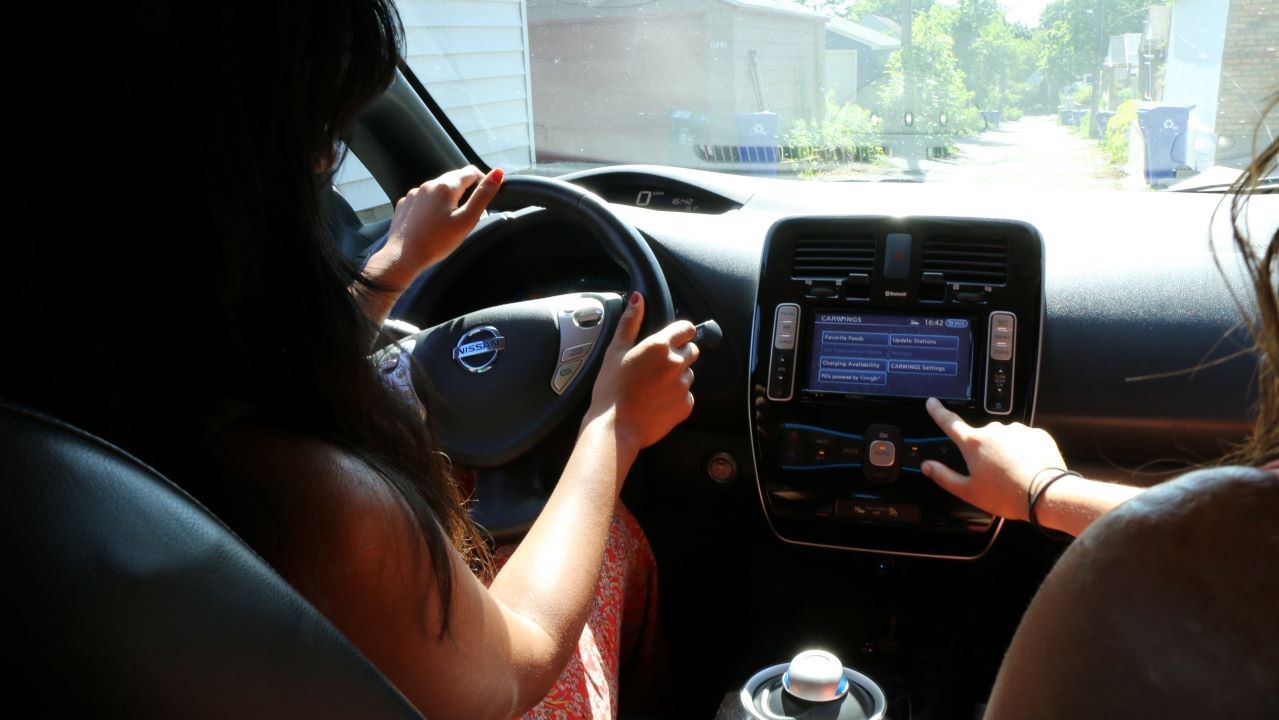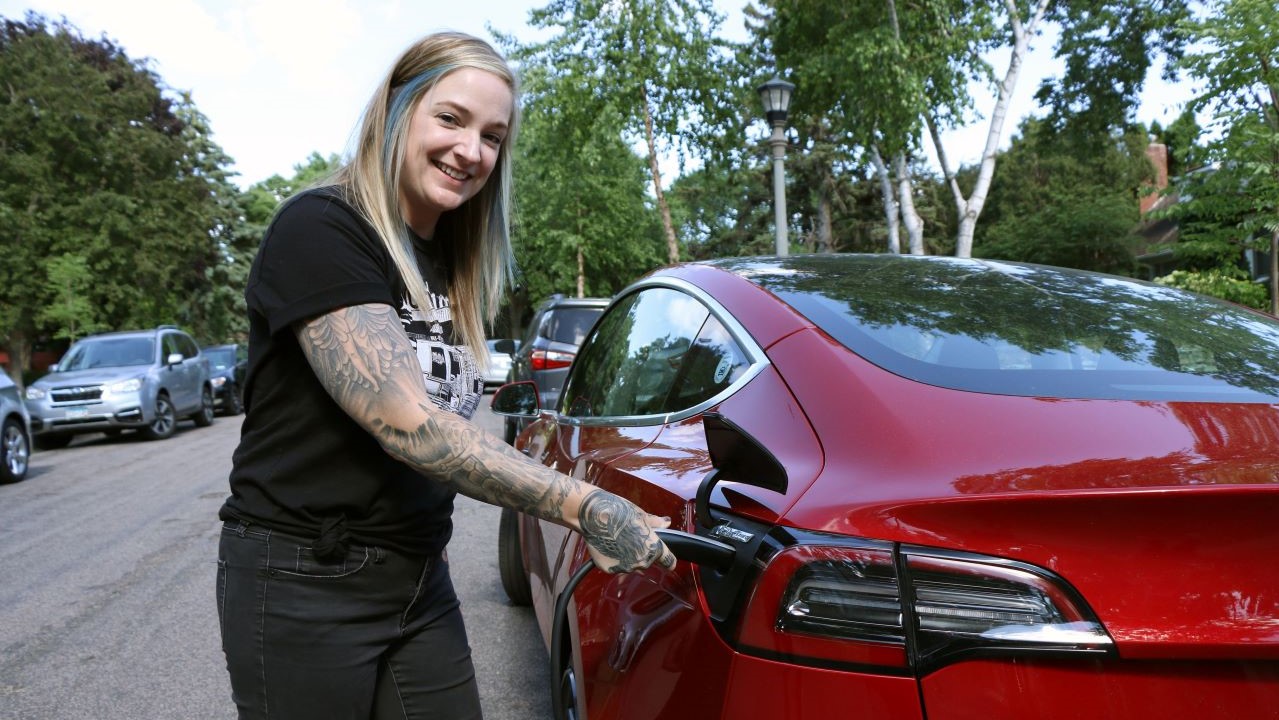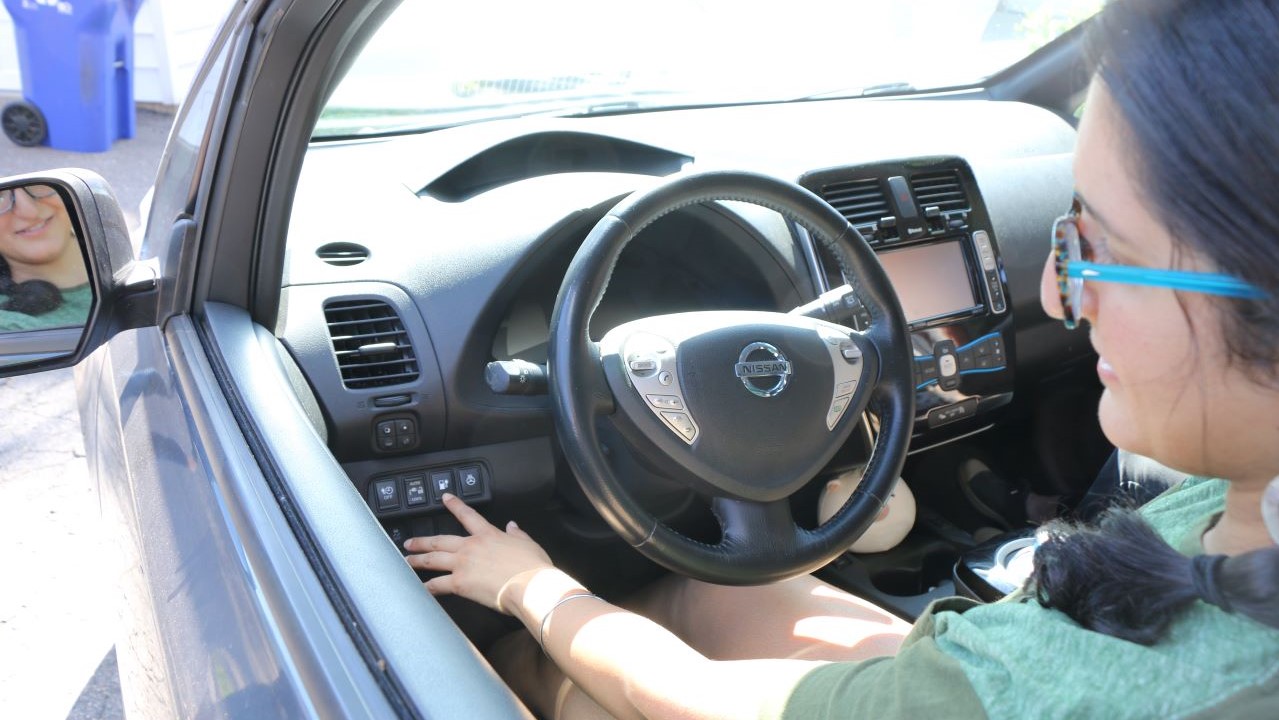
With the recently passed federal infrastructure bill came the largest national investment in electric vehicle charging yet, along with a host of other clean energy and climate provisions. As we look ahead to 2022, there is a real potential for expanded electric vehicle purchase incentives (e.g., purchase rebates) to be realized, either as part of the yet-to-be-passed federal “Build Back Better” legislation, or a proposed Xcel Energy program, or maybe even from the Minnesota Legislature in a year where our state budget surplus has broken records. There is an equally significant opportunity to also ensure that these purchase rebates center equity and are accessible to more folks, particularly under-resourced households and people of color.
Fresh Energy has been driving policies around clean energy and climate investments for nearly 30 years, motivated by the need to do what science tells us: Accelerate decarbonization, across all sectors, fast. Electric vehicles, or EVs, are a key part of the solution, and will help us reach a zero-emissions future free of both carbon pollution and vehicle pollution. Yet it is also true that EVs are not accessible nor affordable to all communities to the same degree, with ownership of a personal EV remaining largely in the realm of white, wealthy Americans. Along with increased electric public transportation like electric buses and more active forms of transportation like walking and rolling, electric vehicles are essential for reducing carbon emissions rapidly here in Minnesota and beyond. EVs also boast massive public health benefits, especially for children, older Minnesotans, economically under-resourced communities, and communities of color. Check out this blog post we wrote about the link between EVs, public health, and the planet.
If we want to electrify our transportation system at the pace and scale that science—and our families, homes, and communities—require of us, we need to ensure that we remove barriers preventing non-wealthy, non-white folks from equitably accessing these climate-saving solutions. That means that we must design policies, programs, and incentives, like electric vehicle rebates and purchase programs, that increase access to and affordability of clean energy solutions for the under-resourced and people of color communities who are and will continue to bear the brunt of a changing climate to which they contributed the least.
The successful implementation of EV utility charging programs and rate options can both accelerate transportation electrification and lower the cost of integrating renewable energy onto the electric grid, by leveraging the charging load flexibility and the energy storage inherent in EV batteries. Done right, widespread transportation electrification will benefit all utility customers and Minnesota residents more broadly, resulting in cumulative net benefits to utility customers, EV drivers, and society at large totaling over $30 billion.
EV purchase rebates designed with equitable access in mind can also benefit the general car-buying consumer populace, a group who also need EV purchase rebates, but for a more behavioral reason: to incentivize the purchase of a new technology that these consumers may be hesitant to try without a monetary carrot.
EV rebates are more important than ever
We know that EVs reap both climate and public health benefits. We also know that, although the prices of EVs have fallen dramatically over the past five years with more affordable options in the market, equitable access to the benefits of EV ownership is still limited. That’s because the upfront financial cost of an EV is still a barrier to many individuals and families. And that is especially true for under-resourced communities. This is where EV purchase rebates come in.

EVs are cheaper to operate and maintain over their lifetime than their fossil fuel-powered counterparts. A recent U.S. Department of Energy study found that electric vehicles have a roughly $0.04 per mile savings on maintenance over their lifetime compared to fossil gas-powered vehicles. Over an expected 200,000 miles, these savings can accrue to $8,000. This means that an electric vehicle rebate program that aims to help customers overcome the upfront cost barrier of purchasing an EV will also unlock the benefits of these lower costs over time. While purchasing an EV is a challenge for many to overcome, once it is, recipients of rebate and other purchase programs will benefit from the fuel and maintenance cost savings that accrue over the life of the vehicle, thereby forming a virtuous cycle that supports continued use and ownership of these cleaner vehicles. More details on designing EV purchase rebates to truly support vehicle purchase for under-resourced consumers follow in the next section.
There is also still a need to move past early adopters and reach the next group of consumers who may be more cautious of trying a new vehicle technology. This “general consumer,” who may be price sensitive but has moderate-to-higher wealth, may not need or qualify for the EV purchase rebates meant to assist an under-resourced consumer purchase a cleaner vehicle. However, EV purchase rebates are still crucial to getting this relatively large group of new car buyers to overcome the technology barrier of making the switch to an EV, a point that researchers at the University of California, Davis made in their study reviewing California’s Clean Vehicle Rebate Program. How the rebates are designed, however, can differ. For example, while purchase rebates for under-resourced consumers should be priced high enough to support a clean vehicle purchase, purchase rebates for the general consumer should be priced to incentivize a behavior change. In other words, these rebates will generally be lower since their purpose is to convince the consumer to try something new versus overcoming an insurmountable cost barrier.
But it’s not just the EV purchase rebate amount that matters when it comes to equitable rebate design.
How to design EV rebates with equity in mind
Equitable rebate design goes beyond the value of a rebate, though that is a key part. It is also important to address other barriers to accessing these programs, so that all consumers, not just the wealthiest, can easily partake in them. One example is the type of rebate and whether it can be used to reduce the upfront purchase price of an EV immediately or requires waiting for a refund after purchase—such as the federal EV tax credit, which is claimed on a tax return. This has meant two things:
- Consumers needed a high enough tax burden each year to claim the entire rebate amount, and
- The consumer had to already have sufficient upfront cash to pay the full vehicle price or pay the down-payment on an auto-loan, and then file a tax return to earn the rebate later.
For context, using the 2021-2022 federal tax brackets for taxable income, a single person making $45,000 would only have a taxable income of roughly $5,000—below the $7,500 federal EV tax credit available for certain models—meaning those consumers would lose out on one-third of the overall value of the tax credit. This leaves out a huge portion of the population in Minnesota, and around the nation, in being able to take full advantage of the federal EV tax credit as currently designed.

Thankfully, groups like the Greenlining Institute and the Union of Concerned Scientists have conducted detailed research and analysis to figure out what could work better. The following principles of equitable EV purchase rebates summarize their efforts and are broadly applicable to any clean energy rebate meant to serve consumers.
- Use cash rebates or those that can be applied at “point of sale”—this avoids the issue mentioned above with the current federal tax rebate and ensures the value of the rebate comes off the sticker price of the EV so that savings are enjoyed immediately.
- Use progressive rebates—this means offering higher rebates to under-resourced consumers or restricting the use of a rebate to under-resourced consumers through an income cap or income-qualification. Inclusion of a carve-out for income-qualified consumers can also guard against a “first come, first serve” outcome that depletes rebates before income-qualified consumers can use them.
- Provide rebates for both new and used vehicles—Over 60 percent of new car buyers have incomes above $75,000, with almost half of buyers making over $100,000. This does not reflect the general household income distribution in the U.S. In other words, wealthier consumers are overrepresented in new vehicle purchases. However, used car buyers do reflect the general household income distribution, so used EV purchase rebates should be included to better match the buying patterns of all households, not just the wealthiest.
- Invest in outreach and education—the best-designed EV purchase program could still end up not having the rebates equitably distributed among consumers, without additional efforts to ensure all consumers, especially those new to EVs, know and understand how to use and apply for the EV purchase rebates. Robust education on EVs and extensive community outreach, through partnership with organizations rooted in the communities most under-represented in EV purchases—i.e., those in Greater Minnesota, those of color, under-resourced, and renters—will be needed to ensure EV purchase rebates reach more consumers.
- Consider other complementary support—other opportunities to increase access to clean vehicles exist beyond an EV purchase rebate and, indeed, paired with EV purchase rebates can ensure even more consumers can fully access the benefits of owning an EV. These include rebates or financial assistance to install home charging, a pre-paid card to use with public charging—which is typically more expensive than home charging but more often the sole way a renter can charge, for example—or assistance in securing low-cost auto financing.
These principles are explained in greater detail in both our initial comments and our reply comments to a recent Xcel Energy docket on EV rebates.
As we look to speed our state’s transition to a clean energy economy and reap the benefits of cleaner air and water and improved public health across Minnesota for generations to come, we will need continued incentive programs that expand the reach of clean energy technologies—whether electric vehicles, heat pumps, electric bicycles, and everything in between—particularly for Black and Indigenous Minnesotans, other Minnesotans of color, and other under-resourced communities and groups across our state. Fresh Energy looks forward to ongoing engagement with those providing EV purchase incentives, and our partners, to ensure that utility and federally proposed investments in our clean energy future are rooted in equity and accessible for every single one of us. Stay tuned for more updates!
Fresh Energy would like to thank the Greenlining Institute and the Union of Concerned Scientists for their robust research regarding how to equitably design electric vehicle purchase incentives. For more information on how to design clean vehicle programs that benefit under-resourced consumers, check out the Clean Mobility Equity Playbook from Greenlining Institute.
